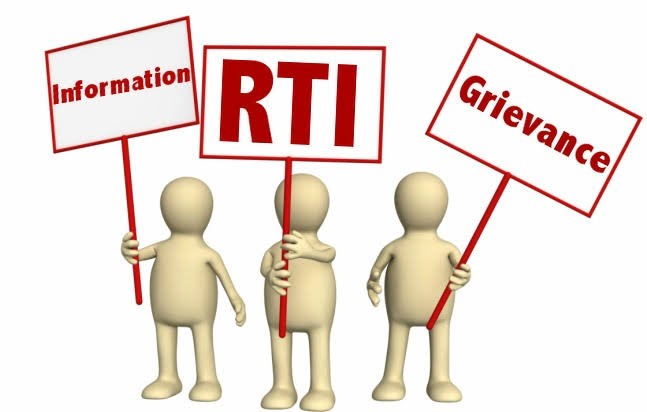MANIPUR’S POLITICAL CRISIS AND THE WAY AHEAD
Syllabus:
GS-2:
- Government Policies & Interventions
- Transparency and Accountability
Why in the News?
The Right to Information (RTI) Act, once seen as a tool for transparency and accountability, is being gradually weakened through judicial interpretations and administrative delays. The Supreme Court rulings and amendments have effectively transformed RTI into a Right to Deny Information (RDI), curbing citizens’ access to government data.
About the Right to Information (RTI) Act, 2005
- Constitutional Basis: The RTI Act derives from Article 19(1)(a), which guarantees freedom of speech and expression. Without access to government information, citizens cannot form informed opinions or hold authorities accountable.
- Objectives: The Act aims to empower citizens, promote transparency, and ensure accountability in government functioning.
- Structured Process: It defines a formal procedure for seeking information, including:
- How to file a request
- Timeframe for responses
- Method of providing information
- Applicable charges
- Exemptions for restricted information
Key Provisions of the RTI Act
- Section 4 – Record Maintenance: Mandates public authorities to catalog and index records to facilitate easy access to information.
- Section 6 – Filing a Request: Allows any citizen to seek information in writing from a designated Public Information Officer (PIO) at central or state levels.
- Section 7 – Response Timeframe: The PIO must provide information within 30 days or reject the request citing valid reasons under Sections 8 and 9.
- Section 19 – Appeal Process: If denied information or dissatisfied with the response, applicants can appeal to a senior officer within the concerned department.
- Exemptions: Information related to national security, defence, or personal data is exempt from disclosure.
The Promise of RTI and Its Gradual Erosion
- Empowerment through transparency: The RTI Act was introduced to empower citizens by codifying their fundamental right to information, allowing them to hold public officials accountable.
- Resistance from bureaucracy: Within a year of enactment, the government attempted to amend the Act, fearing that it shifted power from public servants to the people, but public protests prevented these changes.
- Ineffective Information Commissions: Most information commissioners were retired bureaucrats who saw their roles as post-retirement sinecures and failed to enforce penalties on officials denying information.
- Judicial dilution: The Supreme Court’s 2011 judgment in CBSE vs. Aditya Bandopadhyay weakened RTI by stating that indiscriminate requests for information could harm administrative efficiency.
- Increased backlogs and delays: Governments deliberately delayed appointments of information commissioners, causing case backlogs, while some commissioners took over a year to resolve appeals.
Judicial Blow to the Right to Information
- Contradictory Supreme Court stance: The CBSE vs. Aditya Bandopadhyay ruling discouraged citizens from seeking broad-based information, weakening the spirit of the RTI Act.
- Defining ‘personal information’ vaguely: The 2012 judgment in Girish Ramchandra Deshpande vs. CIC allowed officials to deny information about public servants’ assets, disciplinary records, and financial dealings, under the guise of privacy protection.
- Ignoring parliamentary intent: The RTI Act’s proviso states that information which cannot be denied to Parliament should not be denied to any citizen, yet courts have ignored this clause, allowing broad interpretations favoring opacity.
- Judicial rewriting of law: Instead of strictly interpreting exemptions, courts have expanded the scope of denial, undermining the intent of transparency laws.
- Precedents restricting information access: The Girish Deshpande ruling has been used in six subsequent judgments, setting a legal precedent that facilitates information denial rather than ensuring public access.
Political and Bureaucratic Resistance to RTI
- Attempts to dilute the Act: Over the years, successive governments have tried to weaken the RTI Act through amendments and administrative delays. The 2019 amendment to the RTI Act curtailed the independence of information commissioners by allowing the government to determine their tenure and salaries.
- Bureaucratic reluctance: Public officials often view RTI as a threat rather than a tool for good governance, leading to deliberate non-compliance and evasive responses.
- Opaque decision-making: Instead of proactively disclosing information, many government departments withhold critical data, citing vague reasons like national security, privacy, or administrative burden.
- Limited political will: Governments at both central and state levels fail to fill vacancies in Information Commissions, slowing down the resolution of RTI cases and making citizens’ access to information ineffective.
- Digital barriers and access limitations: With the introduction of the Digital Personal Data Protection Act, additional restrictions have been placed on disclosing public information, limiting citizens’ ability to scrutinize governance.
The Role of Civil Society and Media in Defending RTI
- RTI activism and whistleblowing: Civil society organizations and RTI activists play a crucial role in ensuring transparency by filing RTI applications and exposing corruption. However, they face threats, harassment, and attacks, discouraging wider public participation.
- Media as an RTI watchdog: Investigative journalism thrives on RTI-based disclosures, but government efforts to control press freedom have made accessing and reporting sensitive information more difficult.
- Public pressure for reforms: When citizens mobilize against RTI dilution, governments are forced to withdraw restrictive amendments, as seen in 2006 and 2019 when public protests stalled proposed amendments.
- Judicial activism in defending RTI: While some court rulings have weakened RTI, others have upheld citizens’ right to access government data, highlighting the importance of public litigation in defending transparency.
- Use of technology for accountability: Digital platforms and open-data initiatives can enhance government transparency, but there is a need for greater public engagement to ensure these tools are not misused to restrict information flow.
Challenges in Implementing RTI Effectively
- Resistance from public authorities: Government officials view RTI as an inconvenience, leading to delays, incomplete responses, or outright denials.
- Lack of accountability in commissions: Many information commissioners work part-time and fail to impose penalties on erring officials, reducing the deterrent effect of the RTI Act.
- Rise in pendency of cases: With appointments delayed, cases remain unresolved for years, making timely access to information impossible.
- Judicial interpretations favoring secrecy: Courts have redefined RTI exemptions in a way that enables the bureaucracy to withhold crucial information from citizens.
- Threats to RTI activists: Whistleblowers and RTI activists face harassment, violence, and even murder, discouraging citizen engagement with the Act.
Way Forward
- Strengthening enforcement: Information Commissions must strictly impose penalties for unjustified refusals to share information, as per the RTI Act’s provisions.
- Revisiting judicial interpretations: Courts should align their judgments with the original intent of RTI, ensuring minimal exemptions and maximum transparency.
- Fast-tracking RTI cases: Time limits must be strictly enforced for information disclosure at all appellate levels, preventing undue delays.
- Public awareness campaigns: Citizens and media should actively monitor RTI implementation, raising awareness about government transparency.
- Legislative amendments: Parliament must ensure that no judicial or executive intervention weakens the fundamental right to information, preserving democratic accountability.
Conclusion
The RTI Act, meant to be a pillar of transparency, is being systematically undermined. Citizens must resist dilution efforts and ensure that the right to information remains a tool for accountability, not a means for secrecy.
Mains Practice Question
Critically analyze the gradual weakening of the Right to Information (RTI) Act in India. Suggest measures to restore its effectiveness and strengthen citizens’ access to public information.





